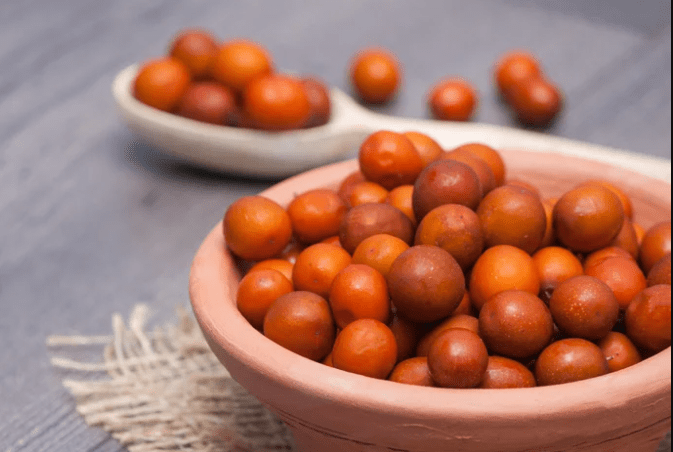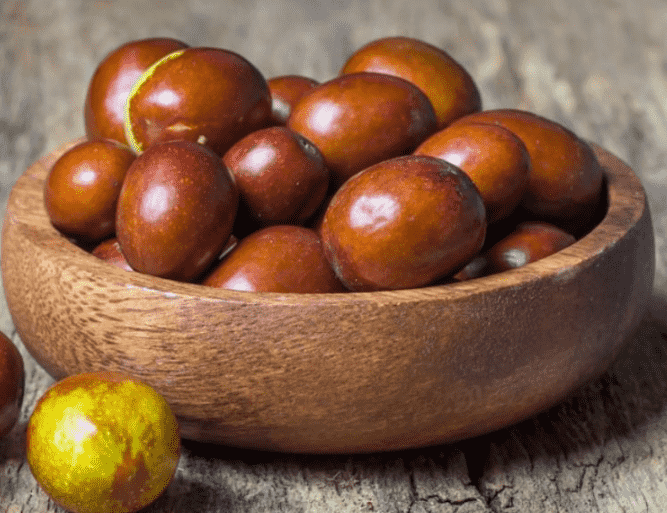žižole (also known as jujube) is an ancient superfruit cherished for its antioxidant, vitamin C, minerals, polysaccharides, flavonoids, and dietary fiber. In many traditional cultures, žižole has held symbolic and healing roles, passed down through folk knowledge, oral tradition, and heritage.
Its low glycemic index and rich nutritional profile make it attractive for immune support, digestive health, and metabolic benefits. In this article, we explore what žižole is, its history, health benefits, uses, side effects, and how to grow and consume it in everyday life.
What is žižole (Jujube)? The Answer
žižole is the common name used in some regions for the fruit of Ziziphus jujuba, belonging to the buckthorn family (Rhamnaceae). The fruit is a drupe with a single hard kernel, surrounded by white pulp that becomes sweet, slightly chewy, and date-like when dried.

Fresh žižole is crisp, mildly sweet, and sometimes likened to an apple, while dried žižole concentrate sugars and become chewy, similar to a small date.
In terms of nutritional content, in 100 g of fresh jujube fruit you may find around 79 kcal, 20 g carbohydrates, 69 mg vitamin C, along with potassium, magnesium, iron, fiber, and trace B-vitamins.
History and Origin of žižole
žižole has a deeply rooted history in Asia. It is believed to have been cultivated in China for more than 4,000 years and featured in ancient literature and agrarian culture.
The domestication and cultivation of jujube spread from southwest Asia (Lebanon, northern India, central China) to the Mediterranean, Middle East, and Europe over centuries.
Records from classical Chinese texts mention management and processing of jujube fruit going back thousands of years, indicating the deep cultural and dietary integration of this fruit in early civilization.
Types of žižole
The mainstream species is Ziziphus jujuba (often called Chinese jujube), which tolerates a wide climate range from temperate to subtropical.
Another related variety is Ziziphus mauritiana (Indian jujube or ber), which thrives in tropical and subtropical climates and is sometimes confused with jujube.
Within Ziziphus jujuba, there are hundreds of cultivars such as Li, Lang, Sherwood, and Silverhill, selected for differences in flavor, size, sweetness, and adaptability.
Health Benefits of Žižole
One of the strongest claims about žižole is its antioxidant potential: it contains flavonoids, polysaccharides, triterpenic acids, and vitamin C, which help neutralize free radicals and protect against oxidative stress.
Studies suggest žižole may support brain function, neuroprotection, memory, and counter nerve-damaging compounds.
Additionally, žižole has been associated with blood sugar stabilization, lipid lowering, digestive support, anti-inflammatory, and anti-allergic effects.
Modern Scientific Insights of Žižole
Recent scientific research frames žižole as both food and medicine, used in many herbal formulas.
Phytochemical analyses have uncovered saponins, ziziphin, kaempferol, quercetin derivatives, and terpenoids such as colubrinic acid, which contribute to its bioactive effects.
However, human clinical trials remain limited, and many claimed benefits are based on animal tests, in-vitro studies, or traditional use, so more rigorous research is still needed.
The Role of Žižole in Tradition
In many cultures, žižole is woven into folklore, hospitality rituals, and celebrations. It is offered as a symbolic gift in family gatherings, seen as a symbol of respect, or used in festival foods.
In Traditional Chinese Medicine, jujube is used as a herbal sleep tonic, to calm the mind, nourish blood, and harmonize other herbs.
In the Middle East, Croatia (Dalmatia), India, Persia, North Africa, and the Mediterranean, žižole / jujube / ber appear in jams, rakija, candied fruit, pickles, and traditional confections, carrying cultural identity.
Side Effects of Žižole
While žižole is generally considered safe, overconsumption may cause digestive discomfort, bloating, or gas, especially in sensitive individuals.
Because it has mild sedative or calming effects, consuming large amounts might lower blood pressure, which could interact with certain medications.
Some people might have allergic sensitivity, especially if they have cross-reactions to related plants; pregnant or breastfeeding women should consult a physician before using concentrated extracts.
How to Eat Žižole
You can enjoy fresh žižole raw — wash, pit, slice, or bite directly. The crisp texture and mild sweetness make it a refreshing snack.
You can also use dried žižole as chewy, date-style snacks, or soak in water to rehydrate for use in teas, infusions, jam, syrup, desserts, or energy balls.
Other uses include jujube tea, jam/preserve, candied fruit, chutney, smoothies, or baking into cakes, bread, or savory dishes.
Popular Žižole Recipes and Traditional Uses
One beloved recipe is jujube tea: take 5–10 dried žižole, remove cores, steep in hot water for 5–10 minutes, optionally sweeten with honey or ginger.
Another is žižole jam or preserve: simmer pit-removed fruit with sugar or natural sweetener until thick, then jar it for use on toast or as a topping.
In some traditions, candied žižole or rakija / liqueur infusion is made by soaking the fruit in alcohol, preserving flavor and symbolic role. In India, ber cake or ilanthai vadai is made by crushing ripe fruit with tamarind, chilli, and salt, then sun-drying into cakes.
How to Plant a Žižole (Jujube) Tree in Your Garden
- Select cultivar: choose a grafted, disease-resistant cultivar suited to your climate such as Li, Lang, or Silverhill.
- Planting site: select a sunny area with well-draining soil and enough space for root expansion.
- Propagation: use grafting, cuttings, or rootstock to ensure consistency and better fruit set.
- Care: maintain regular watering, pruning, fertilization, and control pests such as false codling moth.
With proper care, a žižole tree can bear fruit within a few years and offer harvests for decades.
Conclusion
žižole (jujube) is a remarkable fruit with deep historical roots, rich nutritional value, and versatile culinary and medicinal uses. Modern science confirms its antioxidant, neuroprotective, digestive, and metabolic potentials, though further studies are needed. As part of cultural traditions and home gardens, žižole continues to inspire healthy living and connect us with our heritage. Use it wisely, enjoy it in moderation, and consider growing your own tree to preserve its timeless legacy.
Frequently Asked Questions (FAQs)
What is the difference between žižole and ber (Indian jujube)?
žižole refers to Ziziphus jujuba, which thrives in temperate regions, while ber (Indian jujube) is Ziziphus mauritiana, grown in tropical climates and known for a softer texture and sweeter taste.
Can žižole help with sleep or insomnia?
Yes, žižole has sedative and calming properties. Traditional medicine often uses jujube extracts in herbal sleep tonics to relieve insomnia and anxiety naturally.
How many žižole fruits are safe to eat daily?
Eating around 5–10 dried žižole or a small handful of fresh fruit per day is typically safe. Overeating may lead to digestive discomfort or excess sugar intake.
Are there any precautions or drug interactions?
Because žižole can mildly lower blood pressure and act as a sedative, people taking similar medications should seek medical advice before frequent use.
Can children consume žižole?
Yes, children can safely enjoy žižole in moderate amounts. However, avoid giving whole dried fruits to young children due to choking hazards.
How to store žižole to maintain freshness?
Keep fresh žižole refrigerated and consume within days. Store dried žižole in airtight containers away from moisture, or preserve as candied or jam for longer shelf life.
Does žižole help with digestion or constipation?
Yes, žižole contains fiber and prebiotic polysaccharides that improve gut health, enhance bowel movements, and reduce constipation naturally.
How long does it take for a žižole tree to bear fruit?
A grafted žižole tree generally starts producing within 2–4 years and continues yielding fruit for many decades when properly maintained.
